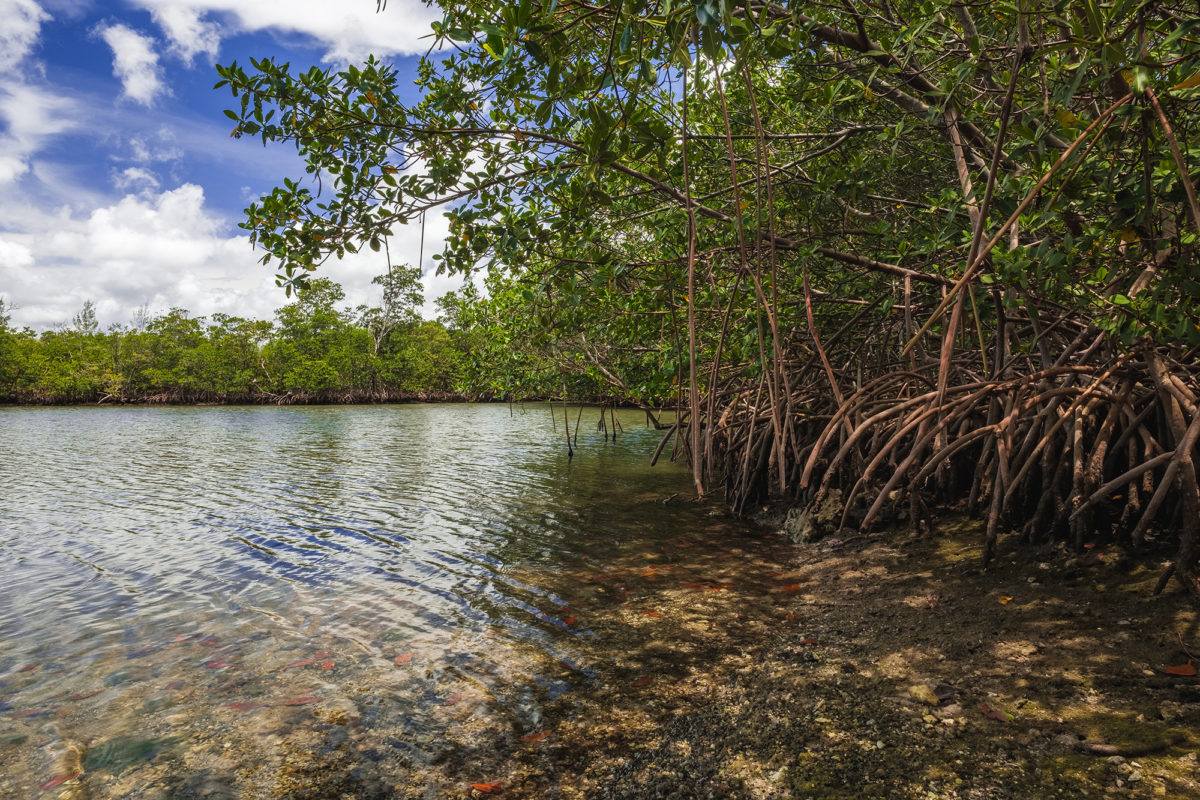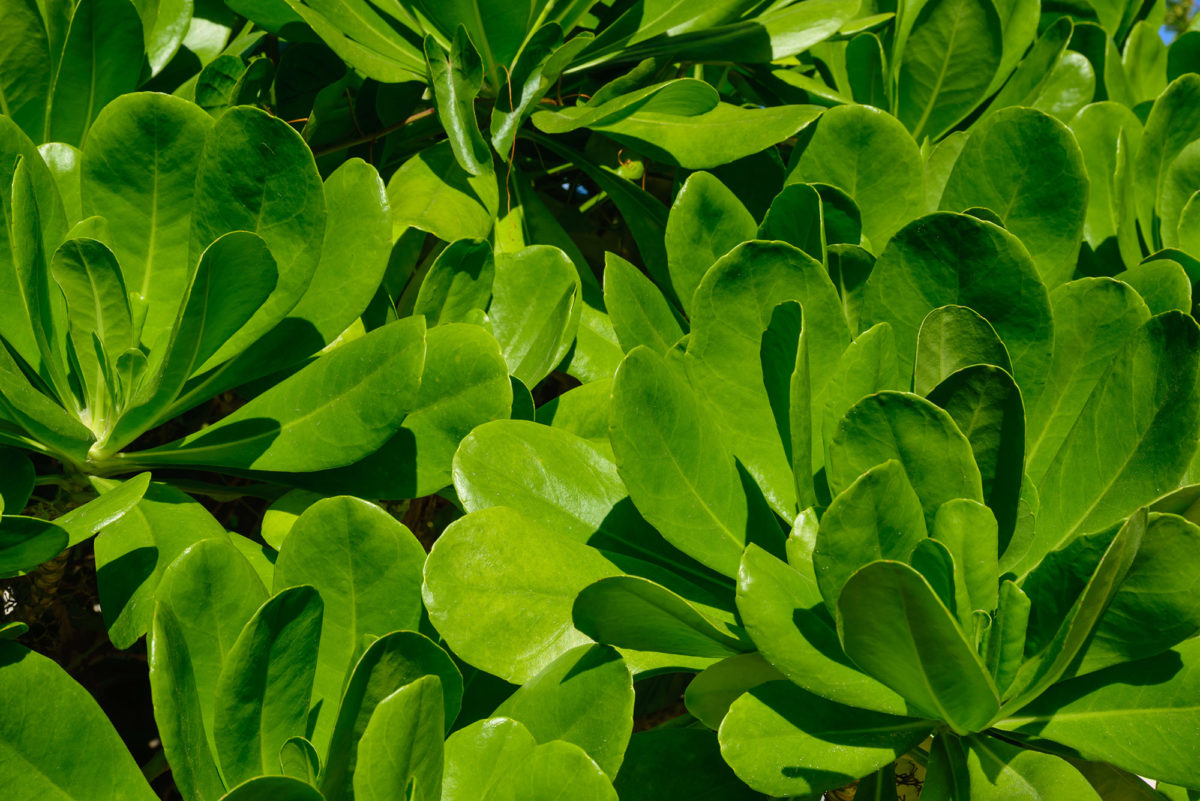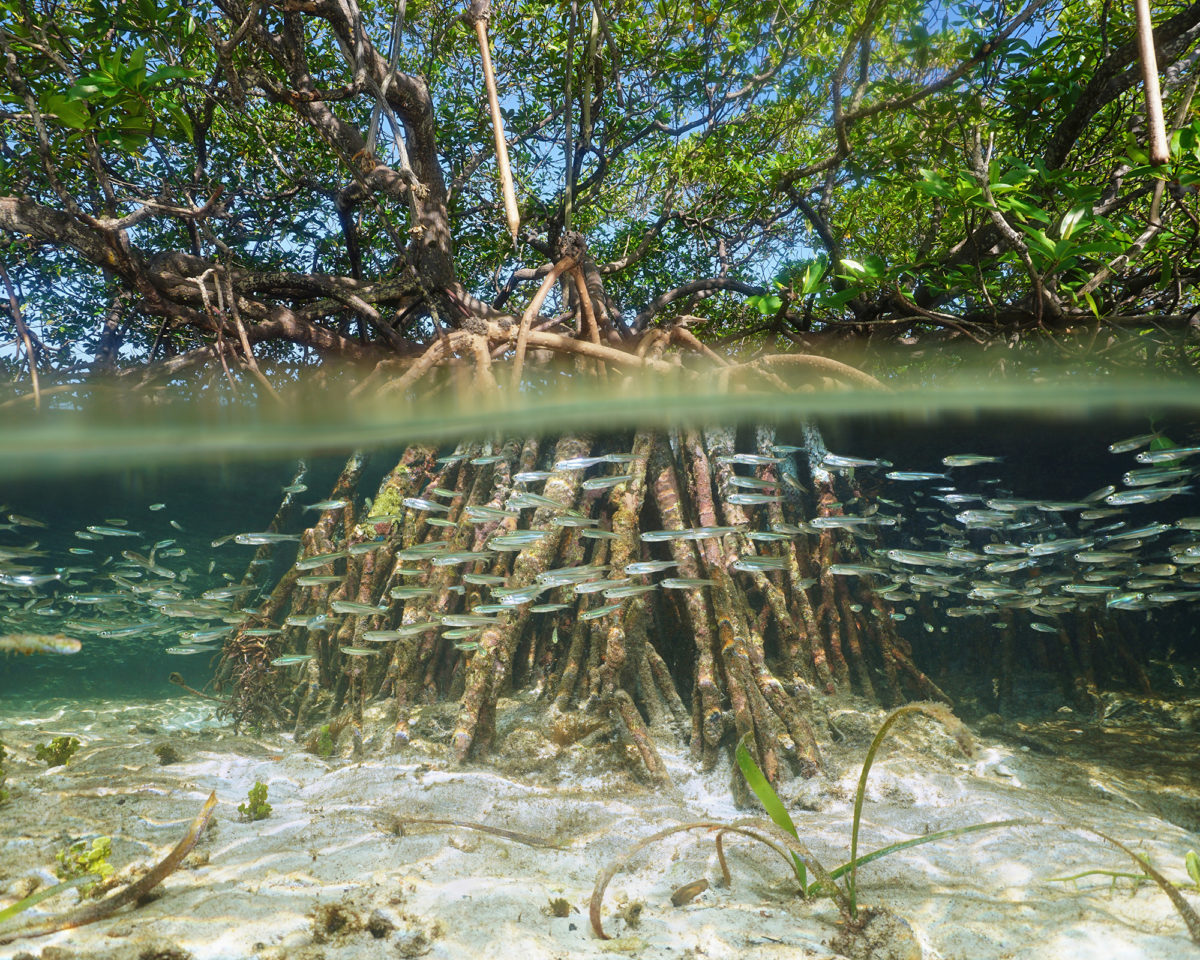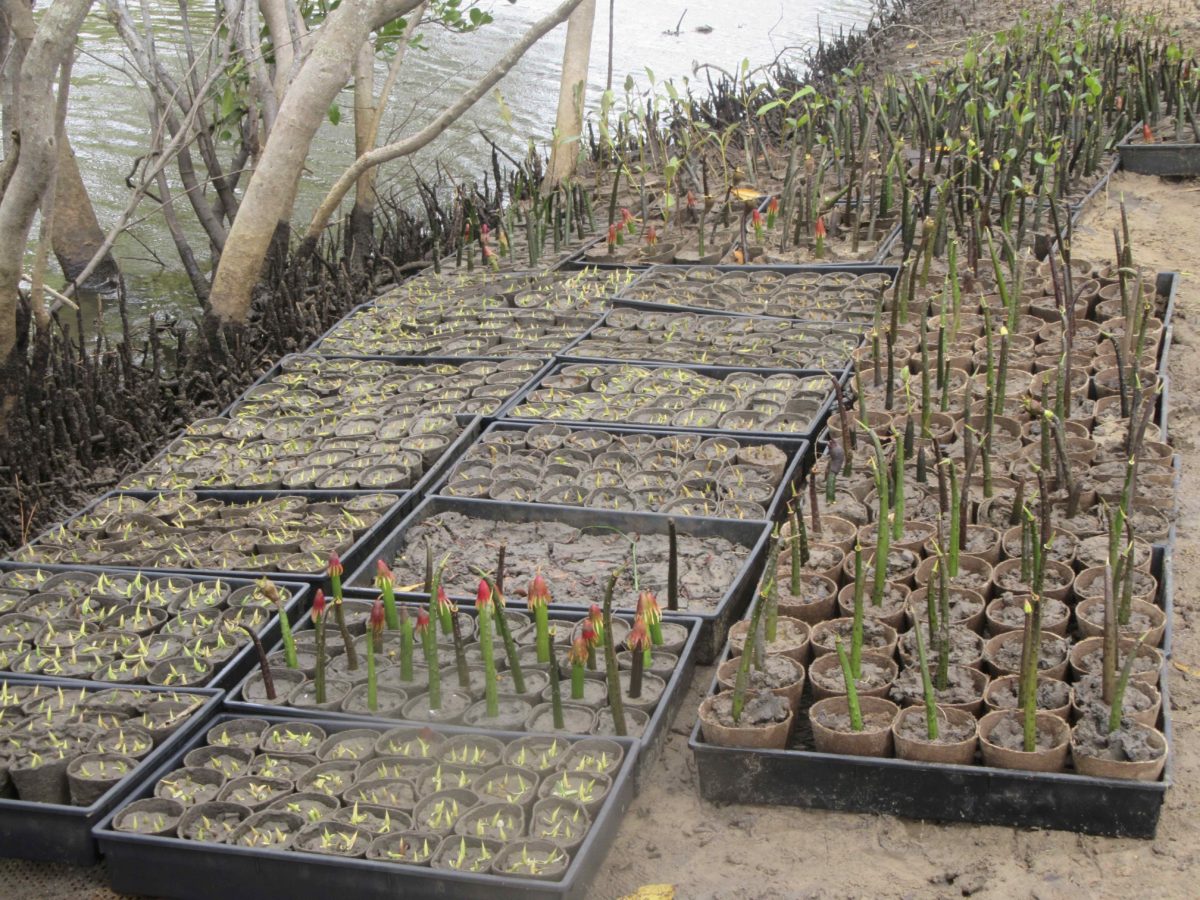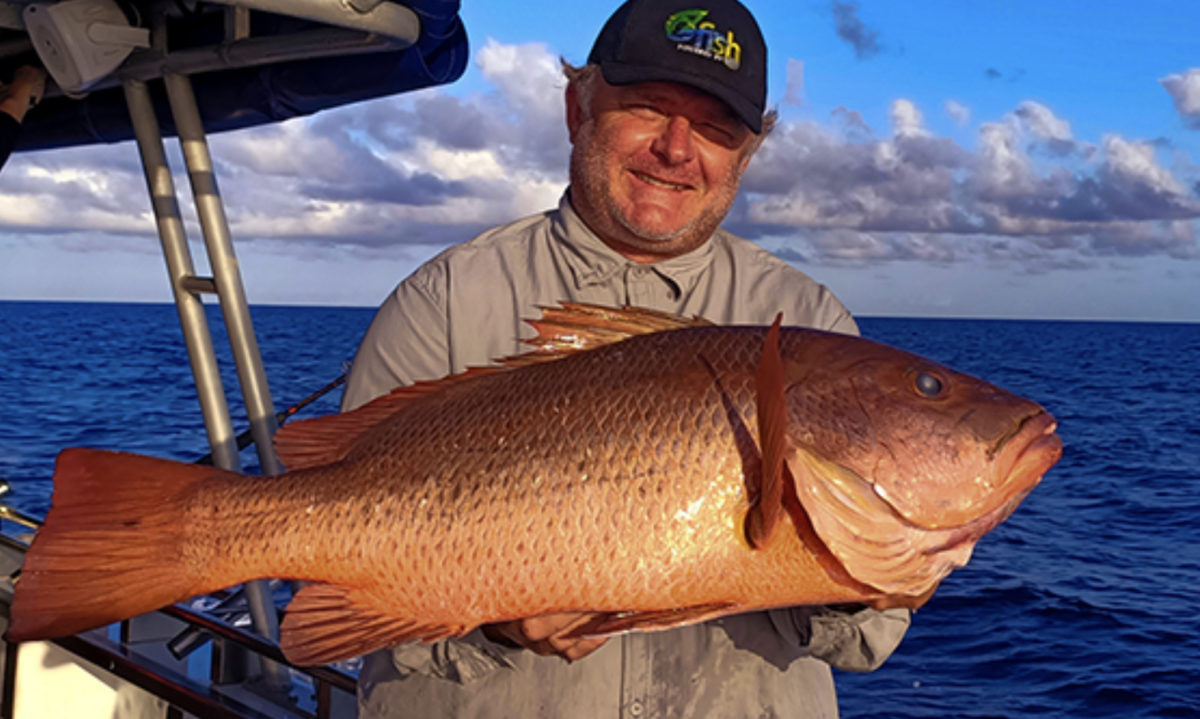Unpack Habitat: Mangrove Forests
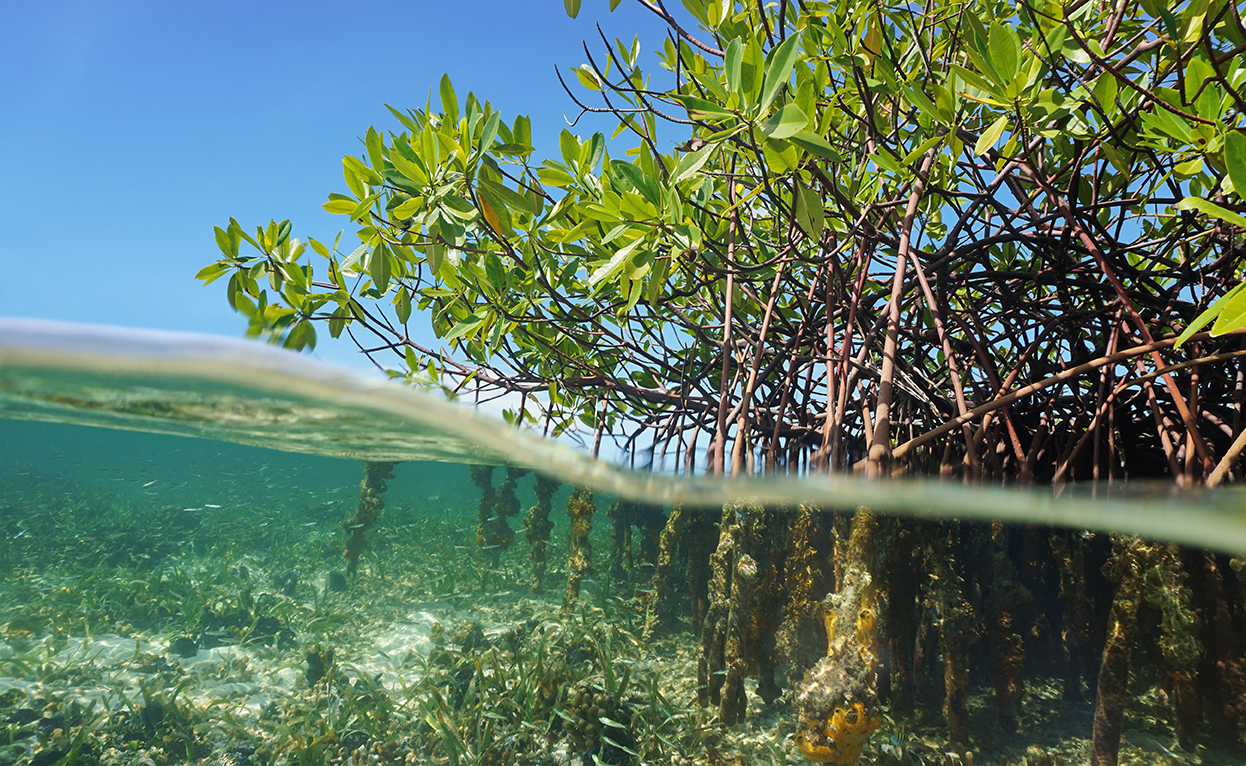
OzFish, supported by the NSW Government’s Environmental Trust, brings you the Growing River Stewardship Program. In this program, we’re unpacking habitat in an eight-part series which will identify key fish habitat. We’re kickstarting this series by unpacking ‘mangrove forests.’
What are mangroves?
Mangroves are a group of trees and shrubs that live in very salty and muddy conditions. When fishing and spending time in and around these areas, you might recall around low tide a smell like rotten eggs? For many people, this is enough for this coastal habitat to be put on the ‘do not visit’ list.
But how can mangroves be your wingman when it comes to fishing? You will mainly find mangroves in protected areas along the coastline, especially in the estuaries. Mangroves are natural defenders for coastal areas. They help break down storm waves for coastlines, and also help filter out the water and all the nasties that run-off our urban environments during wet weather.
Mangrove fringe zone
Mangroves have some physical features that help them survive in this harsh, salty environment.
- A salty sap allows the plant to leak out salt from their leaves.
- The leaves have a wax coating to prevent salt entering leaves.
- They have incredible excreting pores on their leaves to allow the plant to get rid of excess salt
- A specifically designed and adapted circulatory system
The roots do the breathing
Have you ever been to the mangroves at low tide and seen the peg like roots that protrude from the mud? These are known as pneumatophores, and are the mangroves breathing holes, like the snorkels we use when we go swimming. If you do go at low tide try not to stand on these guys as it is hard for the roots to grow back. These also serve as shelter for crabs, prawns and other invertebrates which in turn become prey for predatory birds and fish which frequent these areas.
Some mangroves have exposed roots which are great for baby mangrove jacks to hide in. Mullet, flathead, luderick (black fish) and even some shark species nurse in these areas before they head out to the big blue sea. If we can look after our mangrove areas and provide shelter for these young fish then they have more chance in growing and expanding naturally ensuring we have a really diverse ecosystem.
No mangroves – no fish!
Mangroves are the nursery ground for around 75% of coastal fisheries, they’re a source of food and shelter, so many different fish species live there. I think of mangroves, I think of catching a mangrove jack. As mangrove jacks are ambush predators they really excel in the intricate webbing of roots provided by mangrove habitat. Mangrove jacks generally attack smaller fish and crustaceans that seek shelter near the mangroves. Try fishing the mangroves by running a lure past the front edge of their root system, fish such as mangrove jacks are ambush predators and are waiting to pounce on passing smaller fish (or your lure!). Try bait fishing in the seagrass or sand holes nearby to mangroves, the fish in these areas venture from the mangroves out to feed in these areas and are just waiting for your bait to land nearby.
What’s happening to Australia’s mangroves?
Australia has the third-largest area of mangroves in the world, the majority of which are found along the north and east coast.
In these coastal areas, mangroves, seagrass and reefs work together. The mangroves catch pollutants that would otherwise flow out to sea, and associated seagrass beds provide a further barrier to silt and mud that could smother the reef. In return, the reefs protect the seagrass and mangroves from strong currents and waves. Without mangroves, this productive ecosystem would collapse. So it is important to look at all these elements when assessing fish habitat, not just one. But you need to start somewhere, right?
It is estimated that around 17 per cent of Australia’s mangroves have been destroyed since European settlement. Let’s look at why so we can understand not only how to restore it now but also prevent it from happening again.
As we all know the increase of human population has and continues to create changes to habitats across the world. Some of the issues relating to the detriment of mangrove habitats are the creation of tidal barriers and rock walls, lack of fencing around properties that back onto mangrove forests, use of off-road vehicles in mangrove areas, litter and waste entering the system, walking on pneumatophores during low tide and a rise in sea levels.
This information can be overwhelming even for scientists. But you don’t need to be an expert to help contribute to the preservation and enhancement of mangrove habitat though. There are many ways you can protect your local mangrove areas, get in touch with an OzFish project manager to discuss your local site and what is impacting your mangroves. In the meantime, keep them healthy by picking up any rubbish that’s washed in there and try not to walk or drive on them!
Want to know how you can contribute? Get involved in OzFish Chapter who can help you look after mangrove forests so that we can see loads more mangrove jacks like this one.
Author – Demara Gates
Demara is currently studying at Southern Cross University completing her Marine Science and Land Management degree. She has been privileged to be accepted as an intern with OzFish. She enjoys fishing, snorkelling and getting out on her boat with family and friends around NSW Northern Rivers.

